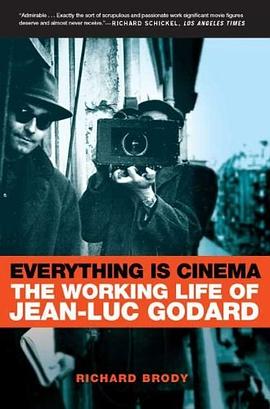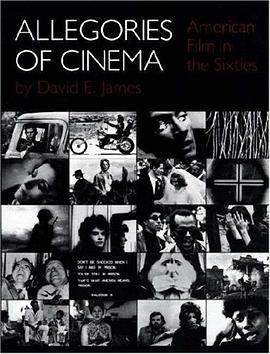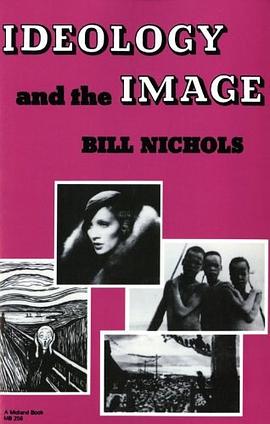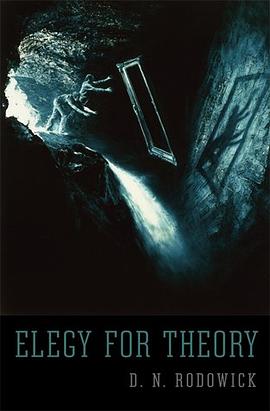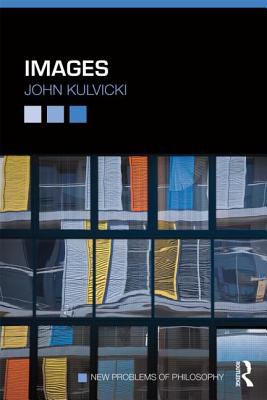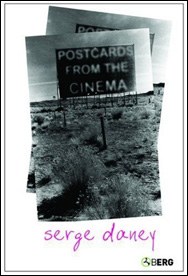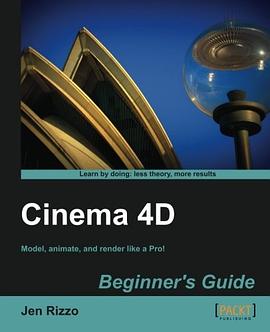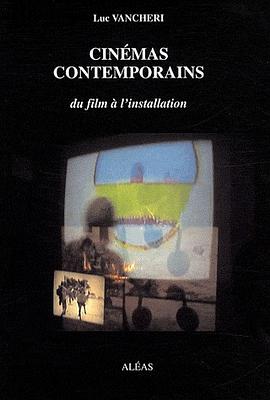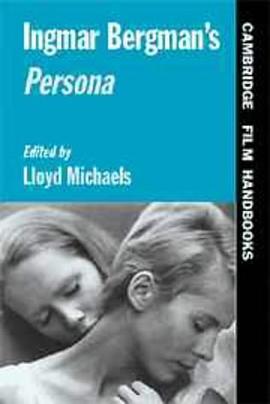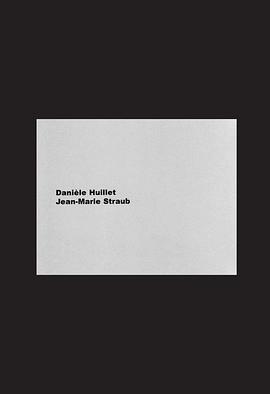

具體描述
The writings of Straub and Huillet, presented for the first time in a critical, English-language edition, shed light on the filmmaking couple's essential contributions and their unique place in film history.
A text is spoken; it merges the sphere of ideas, from which it comes, with an immediate and sensible sphere of bodies that give life to them, with a nature that sustains these bodies, and that they in turn nourish by naming it. The body, in which language resonates, becomes the body of the text itself and protracts its speaking.
Here trees are trees and become trees. We learn by taking pleasure in the sublime essence of colors (leaf-green, earth-brown, sky-blue, bronzed-skin…), of timbres (voices, birds, steps…), of textures (flesh, fabric, earth…), the irreversibility of gestures.
These shots are rich in their concerted poverty: here's how.
―Anne Benhaïem, from introduction to “Conception of a Film”
Sequence Press is pleased to announce the publication of the writings of the filmmaking couple Jean-Marie Straub and Danièle Huillet, presented for the first time in a critical, English-language edition. Two of the most exacting directors of the past fifty years, Straub and Huillet are renowned for their meticulous adaptations of works by giants of Western art and literature: Sophocles, Corneille, Bach, Hölderlin, Cézanne, Brecht, Schoenberg, Kafka, Pavese, et al. The publication coincides with the first complete U.S. retrospective of their films at the Museum of Modern Art in New York, and the concurrent exhibition, Films and Their Sites, at Miguel Abreu Gallery.
Jean-Marie Straub came of age as a slightly younger contemporary of the French New Wave. Like those directors, he began his career writing film criticism. “Writing about films,” Jean-Luc Godard later said, “was already a way of making films.” This volume thus begins with Straub's early film criticism from the 1950s and traces the evolution of over five decades of writing activity, from manifestoes and trenchant declaratory texts, to detailed descriptions of working methods, letters, questionnaires, and select interviews and oral interventions.
Writings opens with an introduction by Sally Shafto that provides an in-depth look at Straub and Huillet's beginnings, within the context of the emergent filmmaking forces of the time. The book highlights their rigorous methodologies as translators of key texts, and the precision work required to adapt those translations for the screen. As Straub himself said, “We are the only European filmmakers, filmmakers of European nations. We make films in Italian as well as in French and in German. Who else can say that?” The book brings us behind the scenes and reveals how their publication practices mirrored those of their film production and distribution, as they often made distinct versions of the same film using alternative takes and different languages.
In addition to the published texts, the book comprises a richly illustrated Atelier section featuring three full length annotated film scripts, along with other pieces of writing, such as letters to their collaborators, shooting diagrams and schedules, lab notes, and press kits, all of which bring the reader into the heart of Huillet and Straub's creative process. The volume closes with a Portfolio of intimate photographs of the filmmakers at work, with onsite observations by their long-time director of photography and collaborator, Renato Berta, and a detailed filmography.
Jean-Marie Straub and Danièle Huillet resolutely eschewed a Hollywood style of spectacle filmmaking to create some of the most raw and beautiful, as well as innovative and profoundly moving films of our times. Their writings open up a further understanding of their essential contributions, and their unique place in film history.
著者簡介
Review
Editor and translator Sally Shafto has selected texts and images with shrewdness and insight, and designer Scott Ponik has assembled them into a book that is not merely easy to read, but is a pleasure to hold. People who've never heard of Straub-Huillet will want to be seen with it … Indeed, this one book informs not only the films Straub-Huillet derived from it, but all of their work. Conflict and struggle are inevitable, resolution is perpetually deferred, but nature, poetry, and music refresh and inspire.
―Kevin McMahon, Los Angeles Review of Books
About the Author
Jean-Marie Straub (b. 1933) and Danièle Huillet (1936–2006) together formed a collaboration that produced some of the most innovative, rigorous, and profoundly moving films in the history of cinema. They are renowned for their meticulous adaptations of works by giants of Western art and literature: Sophocles, Corneille, Bach, Hölderlin, Cézanne, Brecht, Schoenberg, Kafka, Pavese, et al. Straub continues to renew his commitment to subverting cinematic conventions, and maintains the spirit of his exacting partnership with Huillet, broadening a body of work that now includes over fifty films with his most recent, Gens du Lac, released in 2018.
圖書目錄
Acknowledgments
Introduction: Filmmakers at Work by Sally Shafto
List of Films
TEXTS
— 1950s
1. The 15th Venice Film Festival Began Brilliantly with the Americans
2. Grisbi, the Japanese, and Buñuel’s Genius
3. Does Rossellini’s Work Have a Christian Meaning?
4. Five New Films by Rossellini
5. Clouzot Smears the Viewer; Hitchcock Exalts the Public
6. Who Is Nicholas Ray?
7. Status of the New Filmmaker
— 1960s
8. Once Upon a Time There Was a Little Filmmaker
9. Portrait and Character
10. M= M
11. The Second Oberhausen Manifesto
12. Not “Performing,” Reciting
13. Frustration of Violence
14. Encounter with the New German Cinema
15. The Bach Film
16. Questionnaire on Film and Narrative
17. Straub Autobiography
18. Presentation of Not Reconciled
19. I Have Always Been Horrified …
20. Peter Nestler, a Documentarian Not Reconciled
21. On Ernst Lubitsch
22. Protest
23. The Bridegroom, the Actress, and the Pimp
24. Introduction to Nestler
25. Ferocious
26. Mao’s Last Judgment
27. Eliminate the System and the State
— 1970s
28. Introduction to Othon
29. Dubbing Is Murder
30. Othon: Presentation for Its Broadcast on German Television
31. Filmcritica, Eisenstein, Brecht
32. “Not Reconciled” with Television Censorship
33. Filmmaking Must Retain Teamwork …
34. Filmography of Jean-Marie Straub
35. On The Business Affairs of Mr. Julius Caesar
36. Interview on Direct Sound
37. Small Historical Excursus
38. Letter to the Export Union of German Cinema
39. David Wark Griffith, Flower of the American Bourgeoisie
40. Huillet Autobiography
41. To Kluge
— 1980s
42. Letter to Jean Narboni
43. Witches (The Chimera?)
44. How to “Correct” Nostalgia
45. Letter to Fred Camper
46. Reagan at Bitburg
47. Fire: Alfred Edel
48. Letter to Wim Wenders
49. An Attack on the Reproducibility of a Work of Art
50. Hölderlin, That Is Utopia
51. Cézanne/Empedocles/Hölderlin/von Arnim
52. Conference: Conception of a Film
53. Filmcritica Is the Only Italian Review …
— 1990s
54. S.D.
55. Quite a Lot of Pent-Up Anger …
56. Interview on Chronicle of Anna Magdalena Bach
57. Debate on Images and Virtual Reality
58. Interview on Images and Magic
59. To the Inhabitants Alive and Dead of Hiroshima and Nagasaki
60. Interview: No Appeasement
61. Autofilmography
— 2000s
62. Letter About La Vallée close
63. Questionnaire on Globalization
64. Frans van de Staak Has Died …
65. My Key Dates
66. Questionnaire on May 1968
67. Action Directe
68. The Oil Spill
69. Three Messages to the 63rd Venice International Film Festival
Work Journal for Moses and Aaron
by Gregory Woods with Annotations by Danièle Huillet
ATELIER
Letter to Renato Berta for Fortini/Cani
Itinerary for Too Early,Too Late
Letter to Willy Lubtchansky and Caroline Champetier for Too Early,Too Late
Diagrams for The Death of Empedocles
Shooting Schedule for Cézanne
Lab Notes for Cézanne
Negative Cutting Notes for Cézanne
Sound Mix Notes for Cézanne
Homage to Louis Hochet
Shooting Notes for From Today until Tomorrow
Letter to Willy Lubtchansky and Itinerary for Sicilia!
Location Notes for Sicilia!
Letter to Willy Lubtchansky About Sicilia!
Press Kit for Antigone
Annotated Script for Antigone
Press Kit for Workers, Peasants
Annotated Script for Workers, Peasants
Press Kit for A Visit to the Louvre
Annotated Script for A Visit to the Louvre
Letter to Julie Koltaï for Her Birthday
Press Kit for These Encounters of Theirs
Annotated Script for These Encounters of Theirs
PORTFOLIO by Renato Berta
Filmography
Compendium of the Writings
Selected Bibliography
Index of Names
Credits
· · · · · · (收起)
讀後感
評分
評分
評分
評分
用戶評價
相關圖書
本站所有內容均為互聯網搜索引擎提供的公開搜索信息,本站不存儲任何數據與內容,任何內容與數據均與本站無關,如有需要請聯繫相關搜索引擎包括但不限於百度,google,bing,sogou 等
© 2025 book.quotespace.org All Rights Reserved. 小美書屋 版权所有

